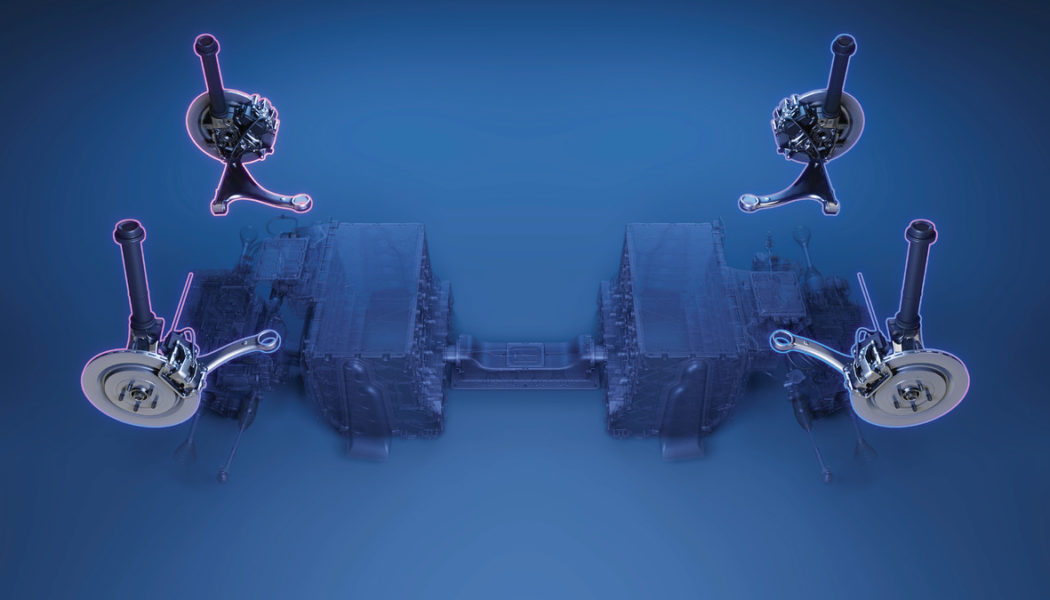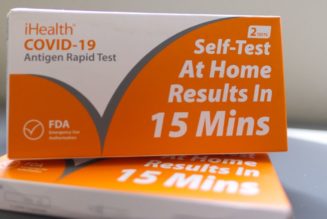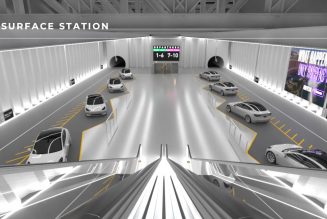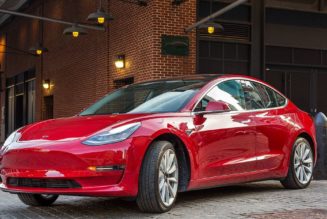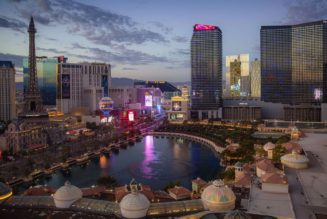Zoox released the second version of its safety report today, containing new details about the vehicle that the Amazon-owned company is building from the ground up to be completely autonomous. The vehicle, which looks like an oversized toaster on wheels, lacks typical controls like a steering wheel and pedals and is designed to be bidirectional, meaning it can travel in either direction. And while that could in theory increase the chances of passengers getting sick, Zoox says its specialized design will make it one of the smoothest rides around.
Zoox is one of the few companies that is building its own autonomous vehicle rather than retrofitting a car designed for human drivers to then drive itself. This gives the company more leeway to place safety-critical sensors where it matters most and include those features that are specifically tailored to passengers, rather than drivers, says Mark Rosekind, the former administrator of the National Highway Traffic Safety Administration and current chief safety innovation officer at Zoox.
Zoox’s vehicle has four lidar sensors, one at each corner providing a 270-degree field of view that overlaps the other sensors, for a total that exceeds 360 degrees, Rosekind said. To Zoox, that’s better than a lidar centrally mounted on the roof with only 360-degree views.
“The real future are purpose-built vehicles,” Rosekind told The Verge. “Doing this from the ground up means we’ve done optimal placement for those sensors.”
:no_upscale()/cdn.vox-cdn.com/uploads/chorus_asset/file/22674048/Zoox_Suspension.png)
Zoox’s vehicle also has an active suspension system with electronically controlled braking that allows for shorter stopping distances. And it will have four-wheel steering, which Rosekind argues doesn’t exist in any production car today. That allows Zoox to control each wheel’s speed, power, and direction independently. If one wheel hits a pothole, for example, the vehicle can compensate for that impact so the passenger barely feels the bump.
“Simultaneously, we control both where it’s going and its lateral position, where it is in space,” Rosekind said. “AI will determine the path. And now with precision control over that steering, we can literally keep you on that path down to centimeters of accuracy.”
Without a steering wheel and a dashboard, Zoox had to “reimagine” its airbag placement, Rosekind said, settling on a system in which a “curtain” of airbags comes down from the ceiling to protect passengers in the event of a crash. In total, the vehicle contains five airbags, which are all connected to an airbag control unit that uses velocity, the direction of the collision, and the number of passengers to determine how they are deployed.
:no_upscale()/cdn.vox-cdn.com/uploads/chorus_asset/file/22674045/Zoox_Airbag_Design.png)
Zoox is also touting its vehicle’s bidirectional capabilities, meaning it will never have to “back up,” which should improve passenger pickups. “No more U-turns, no more three-point turns,” Rosekind said. “Think about that in a congested city.”
Others in the autonomous vehicle industry are skeptical about these types of vehicles, believing they could lead to nauseous passengers. “There’s a debate of whether or not you should make it bi-directional,” Luminar CEO Austin Russell said recently. “That’s a motion sickness problem.”
But Rosekind said that testing conducted by Zoox suggests that it won’t be a problem for the vast majority of passengers. He cited trains and airplanes that have both forward and rear-facing passenger seats as an example. “That’s a question that’s come up,” he said. “The active suspension and our control over these things mean that we’ll be able to control it pretty well.”
Still, he acknowledged that around 12–14 percent of the population experiences motion sickness during transportation. “That’s going to be interesting, right?” Rosekind said. “Who goes for which seat?”
Zoox, which is testing its vehicles in San Francisco and Las Vegas, has yet to say when it plans to launch a commercial robotaxi service. Right now, there are only a handful of autonomous vehicles in California, Nevada, and Arizona that are available to the public. A lot of the early hype surrounding AVs has yet come to fruition, leading many investors and experts to scale back their expectations.
Rosekind said that reaction is understandable, given the complexity of the challenge that autonomous vehicle companies are attempting to tackle. While there will be more pilot programs and small-scale deployments over the next few years, “we’re still 20 or 30 years from when they’re on your street corner,” he said.
Zoox is releasing the latest version of its safety report under the voluntary guidelines established by the US Department of Transportation during the Obama administration, in which Rosekind served as head of NHTSA. The reports serve as a glossy marketing tool for the companies to tout their commitment to safety and transparency, but they generally lack certain relevant statistics, like fleet size, total miles driven, and disengagement rates (or the number of times the vehicle’s software forced a human safety driver to take over operation of the vehicle).
To be sure, there is currently no federal rule requiring AV companies to submit information about their testing activities to the government. Instead, a patchwork of state-by-state regulations governs what is and isn’t disclosed. Recently, Waymo bucked that trend, releasing a detailed report covering over 6 million miles driven, including dozens of crashes and near-misses.
Rosekind said Zoox intends to be equally transparent about its testing and safety operations, including releasing crash data and collision information at some point in the near future. “We actually have already planned for a series of reports that will come out,” he said.
Given the lack of federal standards, there will be questions about how each company defines a collision, but Zoox realizes that these types of disclosures are crucial for building public trust. “If we want trust, it’s data, transparency, and experience,” Rosekind said. “So everyone’s collecting data. At some point, there’s got to be transparency.”
